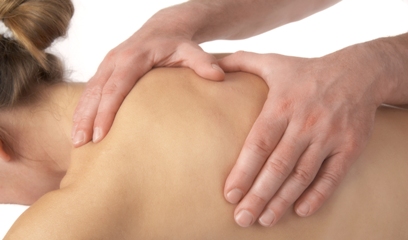by Dawn Sparks, RMT
Finally the sun is shining, the snow is gone and you can get out into the garden or onto the golf course. You spend all day digging or driving, planting or putting. It feels fantastic – until you try to get out of bed the next day! You feel as though your muscles are tied up in knots. It can feel anything from stiff and uncomfortable to downright debilitatingly painful. What’s happened? And what can you do about it?

A Little Physiology
When muscles work, meaning anytime you use them – they contract (shorten) and relax (lengthen). This creates movement or support depending upon the location and function of a particular muscle. Muscle cells, like every cell in your body, require oxygen and nutrients to function and create waste products in the process (lactic acid & carbon dioxide to name a couple). The circulatory system brings oxygen & nutrients into the muscles and takes away the waste.
We also cause micro tears in muscles, especially when challenging them by working out or working hard. When we do things properly this actually strengthens and builds muscle but too often we jump into work without proper preparation and we don’t give our poor muscles the R&R they need to recover.
How Do Muscles Get Tied Up In Knots?
The easiest and most basic explanation is that when muscles are overworked to the point of fatigue and then worked some more they don’t have a chance to relax or lengthen. So the muscle is shortened and shortened and shortened some more. All the blood vessels going in and out of the muscle become constricted so the supply of oxygen is impaired and waste product removal slows to a halt. The nerves in and around the muscle become irritated sending a message of pain and dysfunction to the brain. The brain tells the muscle to tighten up which causes more constriction which leads to more pain which … well you can see where that is going! Eventually knots (also known as myofascial trigger points) are formed within the muscle.
Overtime the muscle can even lose its ability to lengthen properly which can lead to loss of strength and, you guessed it, more pain. All in all not a lot of fun.
So Now What?
Of course an ounce of prevention is worth a pound of cure so garden (or golf) to your heart’s content but warm up, go slow, ease into it and stretch, stretch and stretch before, during and after your activity. Take breaks and build muscle slowly. Get advice from your Registered Massage Therapist, Physiotherapist or Rehab Exercise Specialist on activity specific exercise and stretching.
Too late for prevention this time? Manual therapies are your best bet. Your Cross Roads Registered Massage Therapist will manually warm and stretch the muscles, increase circulation and release those nasty trigger points and then show you what you can do to prevent a recurrence. We can even improve your game but I can’t make any guarantees about your garden!
